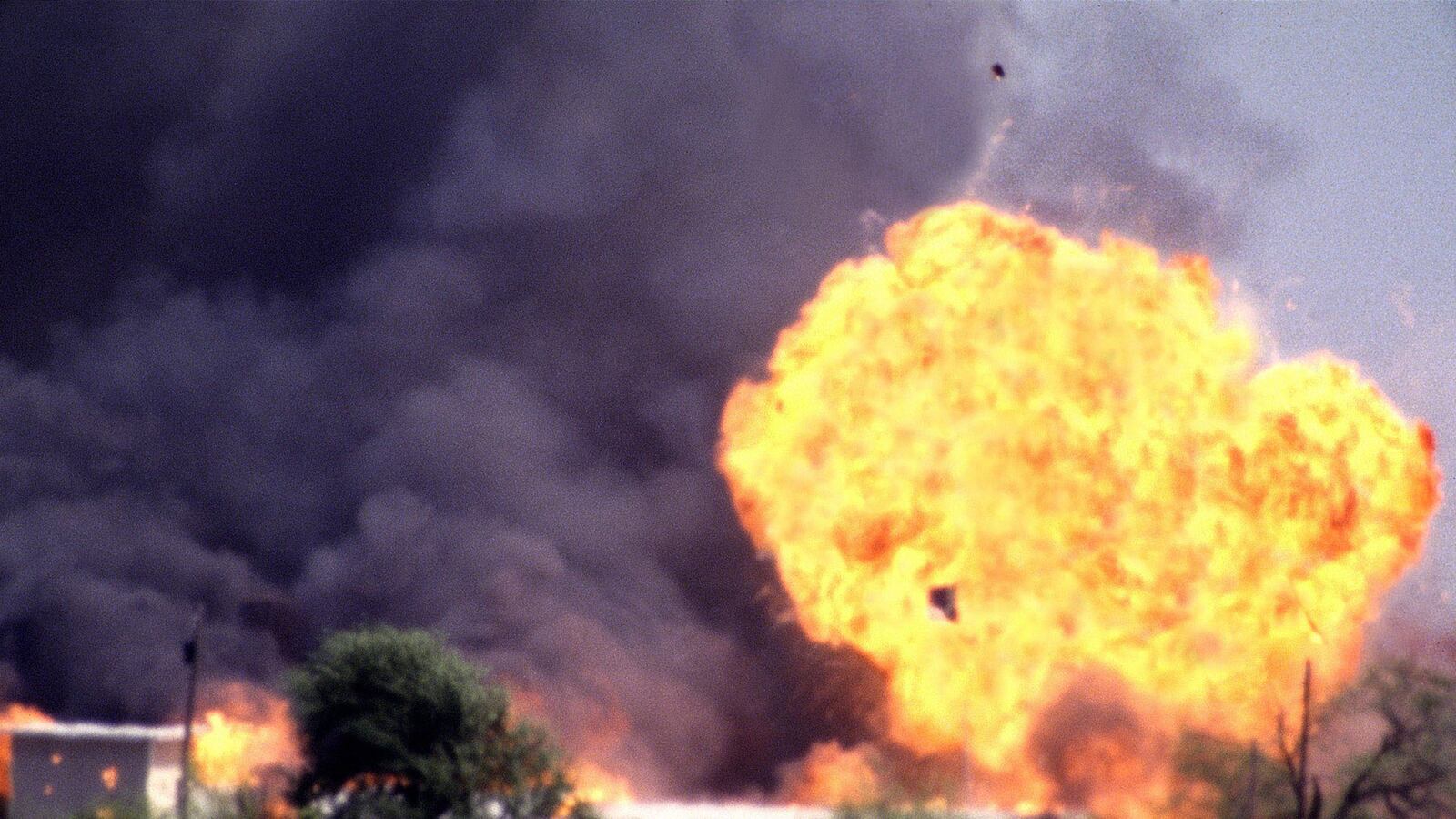“It can escalate to a violent situation very quickly when you have armed groups that are willing to die for their cause,” said McLennan County Sheriff Parnell McNamara, who was a U.S. marshal in the 1993 standoff at a Branch Davidian Complex outside Waco, Texas.
“We had no idea it was going to end up in a shootout.”
The Feb. 28 shooting killed six Branch Davidians and four Bureau of Alcohol, Tobacco, and Firearms agents. Sixteen more agents were wounded, and three helicopters were hit by gunfire and forced to land. What followed was a 51-day siege at the compound and an April inferno that burned 76 people alive, including 21 children.
The now-infamous cult’s leader, David Koresh, was known for claiming a divine right to have sex with girls in the community as young as 10 years old. When officials moved in on the Branch Davidians to serve search and arrest warrants, the shooting erupted. By mid-April, the blaze would kill nearly everyone inside, including Koresh (real name: Vernon Howell).
“It was a very sad situation,” McNamara said.
For law enforcement officials who worked at the compound in those days, the possibility of a violent end to Oregon’s current armed standoff, in which a group of protesters are occupying a federal building, seems far too real.
For all their differences, the two standoffs have striking similarities: federal officials working to figure out how to end it peacefully, locals unsure what to make of the situation, those inside saying they’re willing to die for their cause, and members of the press camping out waiting for the next development.
Ammon and Ryan Bundy, the sons of Nevada rancher and anti-Bureau of Land Management protester Cliven Bundy, are leading the occupation inside a wildlife refuge 30 miles outside the town of Burns. Ammon Bundy claims the group—who now call themselves Citizens for Constitutional Freedoms—will stay there for months, if necessary. Wednesday marked the fourth day of the occupation. The Malheur National Wildlife Refuge is a symbol of the federal land preservation policy that Bundy’s group is protesting, and he reportedly takes issue with federal control of the large swaths of land in the area.
“It’s the responsibility of the folks on the outside to make good decisions,” said Larry Lynch, who handled hostage negotiations with Koresh during the siege. Lynch was a lieutenant with the McLennan County Sheriff’s Office in 1993, and he went on to become sheriff before retiring in 2012.
Lynch, who negotiated the cease-fire that allowed ATF agents to retrieve their wounded during the first shooting, stressed that in any standoff, the armed subjects hold the tactical power.
“They’re the ones that are driving that train,” he said.
“When I sent troops into harm’s way, I wanted to make sure I had every advantage,” Lynch added, explaining why patience is necessary in a standoff like the one near Waco. “If we didn’t have an advantage, we would back out.”
McNamara said he would tell any officials involved in a large-scale armed standoff today: “You need to be prepared for the worst-case scenario, and you need to be prepared if it’s a siege to wait it out.”
He added, “Hindsight’s 20/20. Nobody expected for [the Davidians] to open fire on ATF agents like they did.”
In a Texas Observer interview that marked the 20th anniversary of the siege, FBI agent Byron Sage noted, “[The Davidians] had an advantage because they were in a position of tactical superiority—in the building, concealed, and firing out the windows.”
That advantage seems strikingly similar to a scenario in which armed protesters whom federal agents seek to negotiate with occupy a building.
“Nobody had any idea it would be as long as it was or as deadly as it was,” Sage, who worked with Lynch in negotiations with Koresh, told the Observer. “I was fatigued emotionally, psychologically, physically.”
Lynch said they were all surprised when the group set fire to the complex instead of coming out.
“Vernon Howell had tremendous control over that group of people,” Lynch said. “When you allow your children to be herded into a room and to die, that’s saying something.”
More protesters are reportedly heading to Oregon, where Ammon Bundy and at least 20 others remain in the building, which was closed for the holidays when the protest began.
It’s not clear how many so-called militiamen are now with Bundy, who told a CNN reporter that divulging the number at this point would jeopardize “operational security.”
Lynch said, “It’s always the goal of law enforcement to end a situation peacefully. That’s not always the goal of the people inside.”
One of the Oregon protesters, who would only identify himself as “Captain Moroni,” told an Oregon Public Broadcasting reporter, “I didn’t come here to shoot. I came here to die.”





